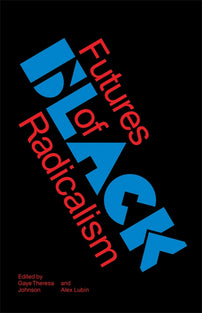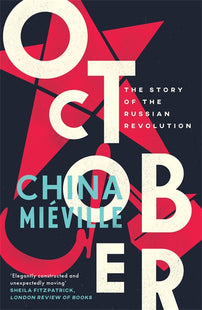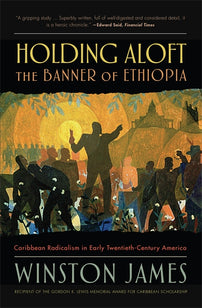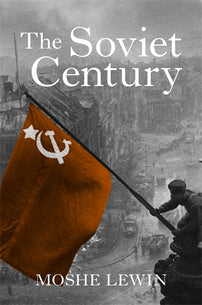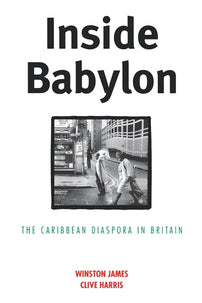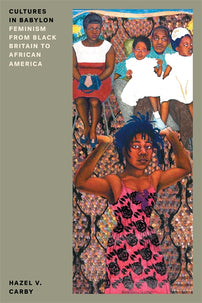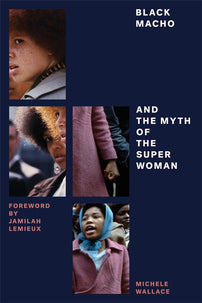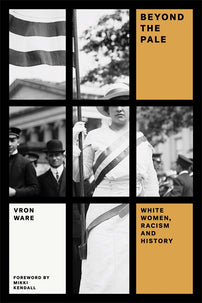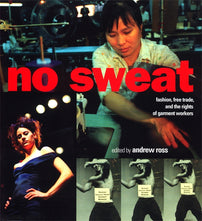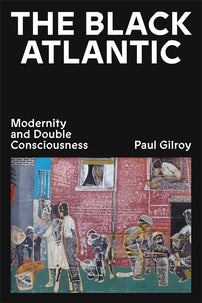“I Wanted to See for Myself the First Land of Socialism”: Black American Women and the Russian Revolution
The promse of 1917 allowed African American women to assert themselves as an integral part of a global movement to end racism, sexism, and imperialism.

First published in Science & Society (October 2017, Vol. 81, No. 4).
As a young Marxist and a member of the Science & Society Manuscript Collective, I am almost ashamed to say that, until recently, the Russian Revolution had very little, if any, significance to me. It seemed far removed from the experiences of my research subjects, black working women in the United States. It was European history and therefore tangential to the history of the African Diaspora. The Soviet Union was nothing more than the cause of nostalgia for my elder comrades. I know now how wrong that perception was. The revolution of 1917 was inextricably linked with the histories of decolonization in Africa and black liberation in the United States.
It was the underexamined archives of black women labor activists that showed me just how important the Revolution was, and is, to me one century later. In the archives of Esther Cooper and James Jackson, I discovered a document that would give the Soviet Union real significance for me, as the daughter of four generations of black domestic workers. Esther Cooper’s Master’s Thesis, "The Negro Woman Domestic Worker in Relation to Trade Unionism" posited the Russian Revolution as a pivotal moment for domestic workers in the Soviet Union and an achievable ideal for black women in the United States. In the two decades after 1917, dozens of black women made the pilgrimage to the USSR and returned to the United States with a new vision of freedom for themselves as workers, as women, and as African Americans.
While the Revolution of 1917 raged on in Russia, George P. and Esther Irving Cooper welcomed their daughter Esther into the world. The Coopers were quintessential black progressives. They embraced the kind of social justice that centered on middle-class upward mobility, education, and racial uplift (Haviland, 2015, 15; McDuffie, 2011, 100). Cooper’s family does arouse a certain scholarly curiosity. In historian Erik McDuffie’s words, what moves "a young woman reared in a 'talented tenth,' southern black family towards the Left?” (2011, 11) Cooper’s answer: the Soviet Union through the eyes of domestic workers.
Cooper’s prophetic vision for domestic workers came to her while she was a graduate student at Fisk University, a historically black institution in Nashville, Tennessee. She enrolled in 1938 after finishing her undergraduate studies at Oberlin. While there, she was invited by a professor into "a little 'Anne Frank'-type room at the back of his house where he lifted up the curtains and it was just full of books by Marx, Lenin, [and] the Communist international." While researching her thesis Cooper was active in a Marxist study circle made up of mostly professors. By the time she completed her studies at Fisk just two years later, Cooper was officially a member of the American Communist Party (CPUSA). (Kelley, 1990, 205; McDuffie, 2011, 103)
I imagine Cooper discovered the Revolution somewhere on that hidden bookshelf in Nashville and that this discovery led her to the belief that the Soviet Union represented a new vision for domestic workers in the United States. The second chapter of her thesis, entitled "Frontiers of American Trade Unionism," briefly charted the experiences of domestic workers in Russia before and after 1917. "The change of the position of domestic workers in Russia is a very impressive one," Cooper began. She continued:
Before the Russian Revolution, domestic workers in the cities often worked from dawn to darkness. The living conditions of workers living-in were inadequate: a cot in the hallway, closet or kitchen was often the only place that the domestic servant had to sleep. The food which the workers prepared was served to the employer, while the worker ate food with little nutritive content. The pay was little and vacations were unheard of.
The working conditions in Russia before the Revolution mirrored those of black live-in domestic workers in the United States. According to Cooper, after 1917 Soviet domestics were able to form trade unions which led to more comprehensive labor rights and better working conditions. But what mattered most to Cooper was the absence of the stigma associated with household labor. "The social standing of domestic workers," she stated, "is equal to any other workers." (Cooper, 1940, 29–30)
Cooper’s thesis remains one of her most groundbreaking achievements and is unlike anything written before or since. Historian Erik McDuffie argues that it is “the most thorough sociological and historical study written on the working conditions and status of black women household workers and their efforts to unionize during the Depres- sion.” (2008, 203) Yet, in America, the stigma attached to domestic work was a racial one. The treatment of black household laborers and their position on the social hierarchy was a carryover from enslavement. In spite of this key difference, Cooper remained hopeful. In her words: "The domestic workers’ unions in the United States have before them the experiences of unions of domestic workers in European countries. . . . The outlook for domestic workers’ unions does not look so dark when we consider the struggles which other unions have had.” (Cooper, 1940, 30)
In the decades since the publication of Cooper’s thesis, the demographics of domestic work have changed, but the stigma still remains. The African, Caribbean, Asian, and Latin American immigrant women who do household labor are the most disenfranchised group of workers in the United States. They are excluded from a number of basic labor protections granted to all American workers by the Fair Labor Standards and Social Security Acts. Yet, like the subjects of Cooper’s thesis, these women are also a part of an active resistance movement that seeks to organize and empower domestic workers to demand their rights. These contemporary activists honor Cooper as the foremother of the current movement. Her vision, inspired by the achievements of Soviet domestic workers, has become theirs.
Six years after Cooper completed her thesis, she visited the Soviet Union for the first time as a part of an all-female delegation hosted by the Soviet Anti-Fascist Youth Committee. (Haviland, 2015, 115) During her six-week stay, Cooper formed long-lasting relationships with Communist women leaders from around the world. She was fascinated by the transformation of Soviet women’s lives brought on by the Revolution. Communism, she believed, could "advance racial equality, decolonization, women’s rights, and democracy.” Cooper’s visit to the USSR bolstered her belief that socialism was an ideal path to liberation for black women. (McDuffie, 2011, 156; 2012, 14–15)
The question of eliminating the racial stigma associated with domestic work was left unanswered in Cooper’s thesis. But for other black women activists who made the sojourn to the Soviet Union in the immediate aftermath of the Revolution, the overthrow of capitalism in the United States would not be possible without an analysis of racial hierarchies. In fact, women like Williana Burroughs, Dorothy West, Maude White, Louise Thompson Patterson, Hermina Dumont Huiswood, and Thyra Edwards made significant contributions to the incorporation of racial analyses into the developing ideology of American Communism. At the fourth congress of the Communist International (Comintern), a "Negro Commission" was formed, led by Jamaican American poet and activist Claude McKay and Suriname-born co-founder of the CPUSA, Otto Huiswood. A few years later at the sixth congress, the Commission began drafting a resolution on what was known as the “Negro Question,” the first of which was released in 1928, followed by a second version in 1930.
The first resolution advocated self-determination for black workers in the American South, or the “black belt.” It called for aggressive recruitment of black workers to the Communist Party and the elimination of white chauvinism. Of the 21 separate demands made by the resolution only one addressed the unique experiences of black women workers. It stated:
The Negro women in industry and on the farms constitute a powerful potential force in the struggle for Negro emancipation. By reason of being unorganized to an even greater extent than male workers, they are the most exploited section. The A.F. of L. bureaucracy naturally exercises toward them a double hostility, by reason of both their color and sex. It therefore becomes an important task of the party to bring the Negro women into the economic and political struggle.
The second resolution made no mention of black women workers. While they certainly labored as factory workers and sharecroppers, the majority of black women at the time worked as household laborers. In eliminating domestic workers from this framework, and declaring them somehow "outside" the economic and political struggle, the resolutions implicitly coded the black proletariat as male.
For women like Williana Burroughs, a New York City school-teacher and Harlem community leader who was present at the sixth congress in Moscow, the marginalization of black women in the resolution was a gross oversight. She was very vocal about her criticism of the Worker’s Party for its "under-estimation of women’s work, particularly of black women’s issues, illustrating how black Communist women shrewdly took their grievances with the U. S. Communist Party officials to Moscow for redress." (McDuffie, 2011, 26) Thus, black Communist women were in no way deterred by white chauvinism. Their experiences in Moscow instilled the belief that the "race problem" (in the Party and in society) could be eliminated through Communism. Moreover, the Comintern recognized and respected black women’s leadership, inspiring a number of African–American activists to relocate to Russia at the recommendation of Party officials. Burroughs did just that in 1937 and worked as the announcer and editor of the English-language broadcast of Radio Moscow. While it may be unimaginable to some that an American black woman would become known as the "Voice of Moscow," for Burroughs the transformation of Soviet society opened the door to a personal transformation as well. (Harris, 2009, 24–25, 35)
The same could be said of Maude White, who was the first African–American woman to enroll in the Communist University of the Toilers of the East (KUTV). She received a scholarship from the institute, which was originally founded to support Communist organizations in the colonial world, and spent three years living in the country. In many ways, the Soviet Union was a meeting place for black American antiracist and anti-colonial activists. It allowed members of the African Diaspora to theorize the connections between black resistance movements all over the world. For black women like White, living in the USSR fostered an understanding that women “constituted the vanguard for transformative change.” (McDuffie, 2011, 53–55)
Louise Thompson first visited the Soviet Union in 1932. She spent three months there traveling ten thousand miles and spending time in six Soviet republics. Reflecting on her trip Thompson wrote: "What I had witnessed . . . convinced me that only a new social order could remedy the American racial injustices I knew so well. I went to the Soviet Union with leftist leanings; I returned home a committed revolutionary.” (McDuffie, 2011, 59) Like Esther Cooper, Thompson believed that black working women were at the forefront of the black revolutionary vanguard. Domestic workers were at the center of her essay "Toward a Brighter Dawn," published in the CPUSA journal Woman Today in 1936.
"Here we are," she wrote, "for sale for the day. Take our labor. Give us what you will." Thompson went on to argue that New York’s street-corner markets, where scores of black women gathered each morning in search of domestic work, were "a graphic monument to the bitter exploited section of the American working population . . . the Negro women." She lauded National Negro Congress’ plan to develop trade unions for domestic workers. This led to the formation of unions in cities like Chicago, Washington, D.C., and New York. These early unions would become the subjects of Esther Cooper’s thesis. By translating their Soviet experiences abroad into a new vision for black women at home, Thompson, Burroughs, White, and Cooper were able to combat the marginalization of black women’s oppression in American Communist ideology while pushing black liberatory movements further left by calling for more radical approaches to addressing racial terrorism. Although American Communists rarely considered black women’s experiences, the Russian Revolution demonstrated what was possible and made their commitment to ending capitalism unshakeable.
These would not be the last black women to take the pilgrimage to Russia in search of the Soviet promise. In the early 1960s the CPUSA’s chief theorist on the woman question, Claudia Jones, fulfilled her dream of traveling the country. Reflecting on her visit in 1962, she wrote: "I wanted to see for myself the first Land of Socialism. . . . I was curious to see a land which I already knew abhorred racial discrimination to the extent of making it a legal crime and where the equality of all people is a recognized axiom.” (Davies, 2008, 125) While the events of 1917 didn’t immediately revolutionize the lives of Soviet women, its promise allowed African American women to assert themselves as an integral part of a global movement to end racism, sexism, and imperialism. Seeing the Soviet Union meant seeing the end of their exploitation as black people, as women, and as workers, with new eyes.
I met Esther Cooper for the first time in 2014 at a conference sponsored by the National Domestic Workers’ Alliance (NDWA). There, she was being honored for a lifetime commitment to equity, respect, and dignity for domestic workers. NDWA’s director, Ai Jen Poo, cited Cooper’s thesis as a foundational document for the contemporary domestic workers’ resistance movement. The women who convened at Barnard College for the conference recognized that their plight was the result of global imperialism. They advocated organization and unity across lines of race, age, language, culture, and national origin. While the NDWA may not celebrate the centennial of the Russian Revolution in the same way that my comrades most certainly will, the very foundation of their ideology, Cooper’s thesis, is made possible because of the Soviet workers’ resistance. In that sense, the Revolution carries a certain significance for me too. Not just as a Marxist, but as the daughter of four generations of black household laborers and activists.
References
Boyce Davies, Carole. 2008. Left of Karl Marx: The Political Life of Black Communist Claudia Jones. Durham, North Carolina: Duke University Press.
Harris, Lashawn. 2009. “Running with the Reds: African American Women and the Communist Party During the Great Depression.” Journal of African American History, 94:1, 21–43.
Haviland, Sara Rzeszutek. 2015. James and Esther Cooper Jackson: Love and Courage in the Black Freedom Movement. Lexington, Kentucky: University Press of Kentucky.
Jackson, Esther Cooper. 1940. “The Negro Domestic Worker in Relation to Trade Unionism.” James and Esther Cooper Jackson Papers, Tamiment Library/Robert F. Wagner Labor Archives, Elmer Holmes Bobst Library, New York University.
Kelley, Robin D. G. 1990. Hammer and Hoe: Alabama Communists During the Great Depression. Chapel Hill, North Carolina: University of North Carolina Press.
McDuffie, Erik S. 2011. Sojourning for Freedom: Black Women, American Communism, and the Making of Black Left Feminism. Durham North Carolina: Duke University Press.
McDuffie, Erik S. 2012. “‘For Full Freedom of . . . Colored Women in Africa, Asia, and in These United States . . .’: Black Women Radicals and the Practice of a Black Women’s International.” Palimpsest: A Journal on Women, Gender, and the Black International, 1:1, 1–30.
Shana A. Russell is a scholar of black women's labor and the daughter of four generations of domestic workers. She is currently the project manager for States of Incarceration, a national public humanities initiative centered on mass incarceration in the United States, at the Humanities Action Lab. Her work has been featured in the anthology From Uncle Tom's Cabin to the Help: Critical Perspectives on White-Authored Narratives of Black Life and in the Marxist journal Science and Society.
[book-strip index="1" style="display"]